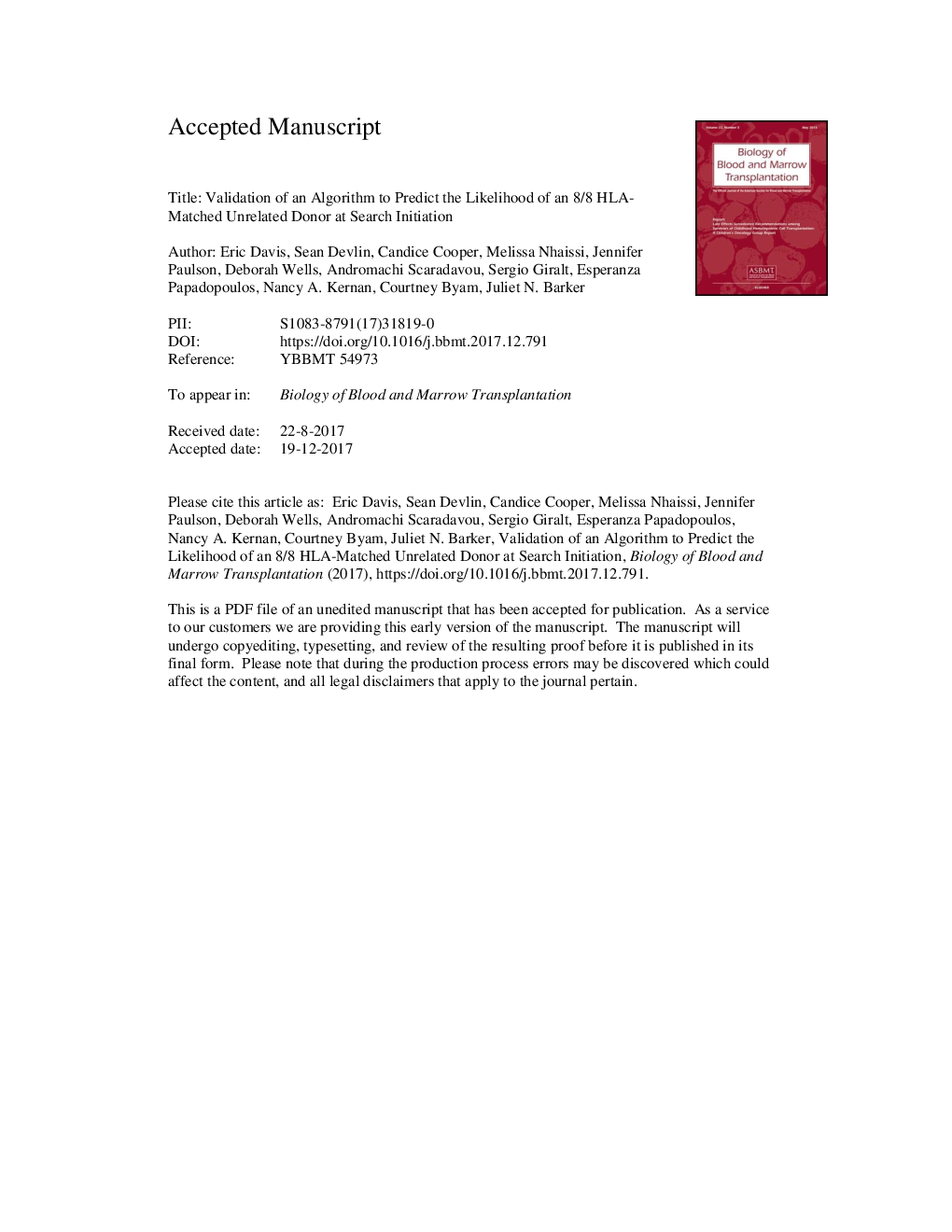| Article ID | Journal | Published Year | Pages | File Type |
|---|---|---|---|---|
| 8430026 | Biology of Blood and Marrow Transplantation | 2018 | 24 Pages |
Abstract
A strategy to rapidly determine if a matched unrelated donor (URD) can be secured for allograft recipients is needed. We sought to validate the accuracy of (1) HapLogic match predictions and (2) a resultant novel Search Prognosis (SP) patient categorization that could predict 8/8 HLA-matched URD(s) likelihood at search initiation. Patient prognosis categories at search initiation were correlated with URD confirmatory typing results. HapLogic-based SP categorizations accurately predicted the likelihood of an 8/8 HLA-match in 830 patients (1530 donors tested). Sixty percent of patients had 8/8 URD(s) identified. Patient SP categories (217 very good, 104 good, 178 fair, 33 poor, 153 very poor, 145 futile) were associated with a marked progressive decrease in 8/8 URD identification and transplantation. Very good to good categories were highly predictive of identifying and receiving an 8/8 URD regardless of ancestry. Europeans in fair/poor categories were more likely to identify and receive an 8/8 URD compared with non-Europeans. In all ancestries very poor and futile categories predicted no 8/8 URDs. HapLogic permits URD search results to be predicted once patient HLA typing and ancestry is obtained, dramatically improving search efficiency. Poor, very poor, andfutile searches can be immediately recognized, thereby facilitating prompt pursuit of alternative donors.
Related Topics
Life Sciences
Biochemistry, Genetics and Molecular Biology
Cancer Research
Authors
Eric Davis, Sean Devlin, Candice Cooper, Melissa Nhaissi, Jennifer Paulson, Deborah Wells, Andromachi Scaradavou, Sergio Giralt, Esperanza Papadopoulos, Nancy A. Kernan, Courtney Byam, Juliet N. Barker,
